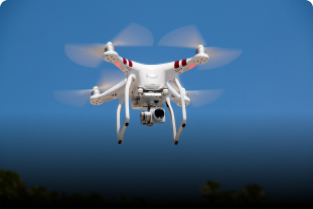Drones, or unmanned aerial vehicles (UAVs), have rapidly evolved from niche gadgets into essential tools used in industries such as defense, agriculture, filmmaking, logistics, and disaster management. With their rising demand, many aspiring engineers wonder if they can be part of this innovation. One common question is: Can a mechanical engineer build drones? The short answer is yes—and here’s why.
The Role of Mechanical Engineering in Drone Development
Drones are complex machines that combine multiple engineering disciplines. While electronics and computer science often take the spotlight, the foundation of drone design lies in mechanical engineering. Here’s how mechanical engineers contribute:
1. Structural Design
Mechanical engineers design the frame, body, and moving parts of drones. They ensure that the structure is:
-
Lightweight (to maximize flight time).
-
Strong (to withstand weather conditions and impacts).
-
Aerodynamically efficient (to reduce drag and improve stability).
2. Aerodynamics
Understanding airflow, lift, drag, and thrust is crucial. Mechanical engineers apply principles of fluid dynamics to design propellers, wings, and airframes that optimize flight performance.
3. Materials and Manufacturing
Choosing the right materials—carbon fiber, lightweight alloys, or composites—makes a drone durable without compromising weight. Mechanical engineers also apply manufacturing techniques such as 3D printing and CNC machining to prototype drone parts.
4. Thermal and Structural Analysis
High-performance drones generate heat in motors and electronics. Mechanical engineers analyze cooling systems and ensure the drone can handle stress, vibration, and environmental conditions.
Skills Mechanical Engineers Can Apply
A mechanical engineer doesn’t need to master all aspects of drone technology but can contribute significantly with these skills:
-
CAD & Simulation: Designing drone components using tools like SolidWorks, AutoCAD, or ANSYS.
-
Robotics & Mechatronics: Applying mechanical principles in synergy with electronics and control systems.
-
Prototyping: Creating physical models for testing and improvements.
Collaboration with Other Disciplines
While mechanical engineers can build drones, collaboration with other engineers makes the process complete:
-
Electronics Engineers: Handle circuits, sensors, and power systems.
-
Computer Engineers/Programmers: Develop software for navigation, flight control, and automation.
-
Aerospace Engineers: Refine flight dynamics for advanced drone systems.
This multidisciplinary teamwork ensures drones are not just mechanically sound but also smart and efficient.
Can a Mechanical Engineer Build a Drone Alone?
Yes, a mechanical engineer with additional knowledge in electronics and programming can design and assemble drones independently, especially at a prototype or hobbyist level. However, for commercial or industrial-grade drones, collaboration across domains is essential.
Conclusion
Mechanical engineers play a vital role in drone development. Their expertise in design, aerodynamics, materials, and prototyping forms the backbone of drone technology. With some cross-disciplinary learning or teamwork, a mechanical engineer can absolutely build drones—ranging from simple quadcopters to advanced UAVs.

